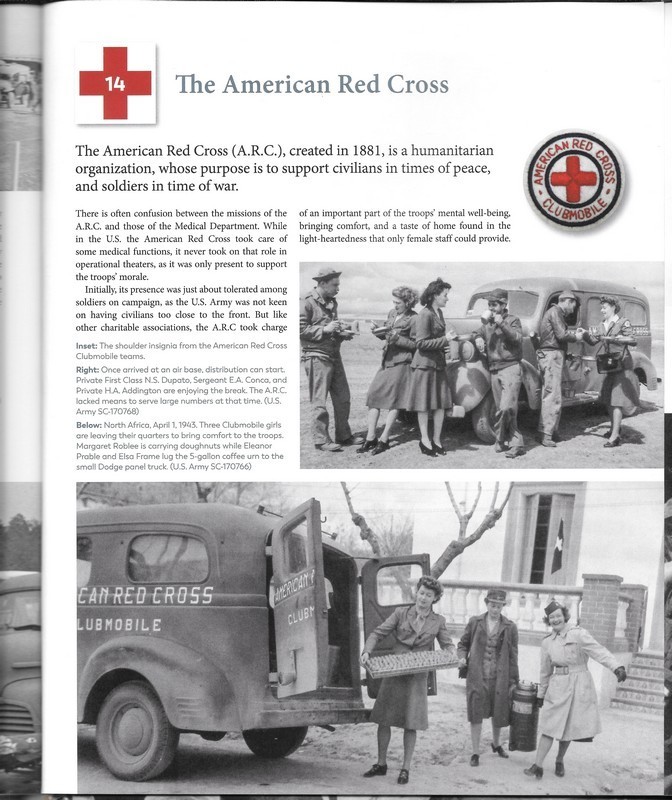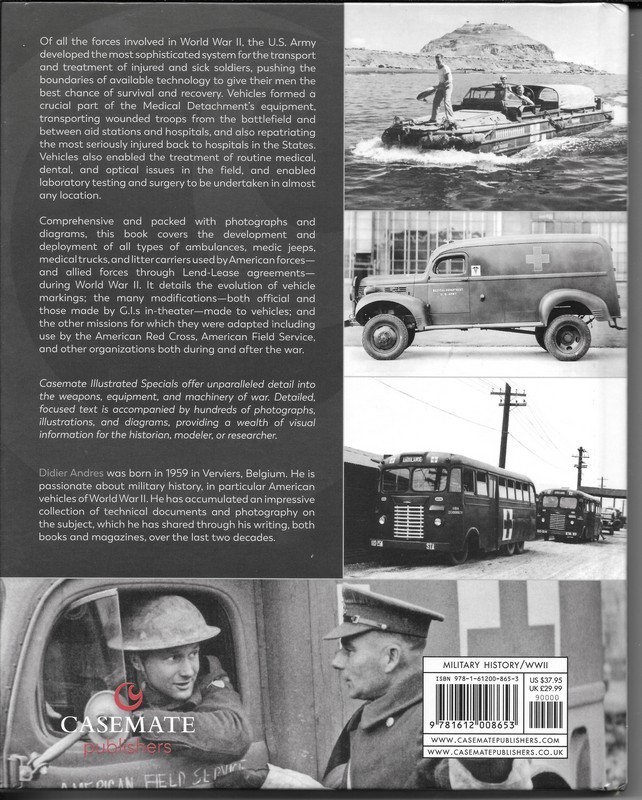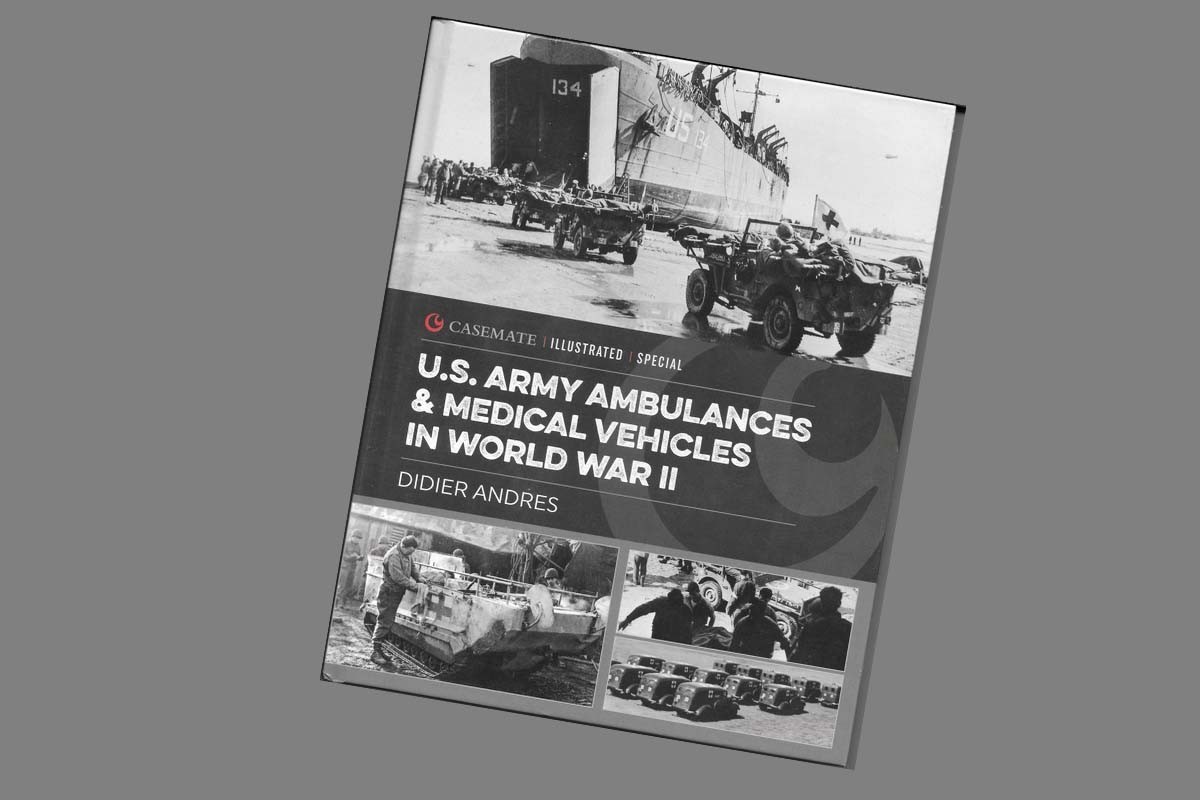
Brief History
The United States Army Ambulance Service (USAAS) was a unit of the United States Army during World War I. It was established by General Order No. 75 of the War Department in May 1917.
It primarily provided medical services to the French, British and Italian Armies during the First World War. In the second World War, the unit aided the British and the Italians. It incorporated the volunteer sections of the American field service, which had been formed before the American entry into World War I.
Each section was composed of approximately "45men, 20 Ford ambulances, 1 Ford touring car, 1 truck, and a kitchen trailer." The number of officers peaked at 209 officers in November 1918 and during demobilization was reduced to 3 in July 1920.
Contents
Publisher: Casemate UK
The book from case mate publishing The US Army Ambulances and Medical Vehicles in World War Two is a hardback book with a glued spine and pagination of 160.
The author is Didier Andres.
Didier Anders was born in 1959 in Verviers Belgium. He is passionate about military history, In particular American vehicles of World War Two. He has accumulated an impressive collection of technical documents and photography on the subject, which he has shared through his writing, both books and magazines, over the last two decades.
1. Introduction.
2. Metropolitan ambulances.
3. Multi patient ambulances.
4. Field litter carriers.
5. Front line ambulances.
6. Medic jeeps.
7. Rescue teams.
8. Medical trucks.
9. Reverse Lend-Lease.
10. Field ambulances.
11. Ambulance markings.
12. Field ambulance is on the front.
13. Different missions, different uses.
14. The American Red Cross.
15. The American field services.
16. Enigmas.
17. Bibliography.
Review
This is the first book of this type from Casemate publishing that I have had the opportunity to review. It is part of their illustrated special books with plenty of pictures with captions that explain exactly what is going on within the picture.
Of all the participants in World War Two, The United States established an unparalleled medical infrastructure. The efforts this nation expended to ensure their soldier's survival was unsurpassed, and the means used went beyond anything else that existed at the time.
Starting with the introduction the book goes on to explain how it all started and shows a large variety of different types of ambulances, some of these ambulances include a known motorised vehicle being towed by two mules. August 7, 1941, A company, 40th Ambulance Battalion is covering the 120 miles between Fort Riley and Fort Leavenworth to take part in exercises. The mule-drawn ambulances took five days to reach their destination.
At the beginning of the 20th century, Metropolitan ambulances were as much a part of the American landscape as the bright red fire engines. With this section of the book discussing the various ambulances that the American army used in 1941 is full of photos and pictures of such models as the Cadillac model 62, the Packard model 4294. In the summer of 1943, these metropolitan ambulances suffered a rapid decline, the problem not their conception but rather the relentless use they were subjected to. when the time came to replace them, the medical Department clashed with the ordnance corps refusal to order more civilian orientated vehicles. Instead, the 1 1/2 ton, 4X2 vans still in production to answer the civilian needs were recommended. In 1943 and1944 Chevrolet supplied 356 models 4105-YR vans to be used as ambulances.
These large-scale medical vehicles were unique to the US army and began development in 1939,
The purpose of these mobile hospitals was to bring medical facilities as close to the front as possible, and be there in as short a time as possible. The medical department decided to launch a large-scale feasibility study and ordered three sets of a specific material.
Under the direction of the medical Department equipment laboratory and together with the Linn coach and truck company, Oneonta, New York, 15 vehicles were ordered. The vehicles supplied by the Linn coach and truck company were based on a small bus and turned into a mobile hospital surgery facility for the frontline.
The concept of the frontline ambulance was vague and only rarely appeared in the US army's lexicon. Indeed, originally, no vehicle was specifically designed to be used at the front. However, many different military vehicles including the Willy's MT Jeep were converted for use over a vehicle that could make the frontline recover the injured your and drive back to the nearest battalion first aid post to deliver the injured soldiers.
The line between a normal military vehicle and its function as an ambulance was sometimes tenuous. Some situations required specially adapted means to rescue soldiers in danger.
One of the most the unusual Vehicles to be used in such situations was the DUKW- 353, amphibious operations were always a gamble, anything could happen in the zone between the ships and the shore, an aircraft pilot crashing into the sea, a GI falling overboard or any incident requiring fishing a man out of the water urgently. GMC DUKW-353 Amphibious trucks were used for this purpose.
Despite regulations and precise allocation tables, field ambulances were the object of their user’s attention and their various needs, but this alone cannot explain everything, and some cases are truly enigmatic.
Conclusion
This book published by casemate UK truly is a unique insight into the life of the medical teams that play so many roles in the rescue and rehabilitation of many soldiers’ lives. The book itself is truly remarkable it is filled with hundreds of pictures some of which are really full of action. There is a chapter covering the various different colour schemes of the various ambulances, like the29th Infantry Division, 104th Medical Battalion, 2nd Collecting Company(Co. B) Ambulance Platoon. This is invaluable to the modeller and military enthusiast for presenting a model of the ambulance to a specific unit.
This book is so interesting and lends itself to one of those books that are so easy to pick up and read, you could find yourself losing quite a bit of time reading the book and studying the pictures. Would I recommend this book to you? I wholeheartedly do fantastic reference material especially? to those that are into model dioramas?
The arrival of the 1938 and 1939 Chevrolet panel vans coverted to ambulances
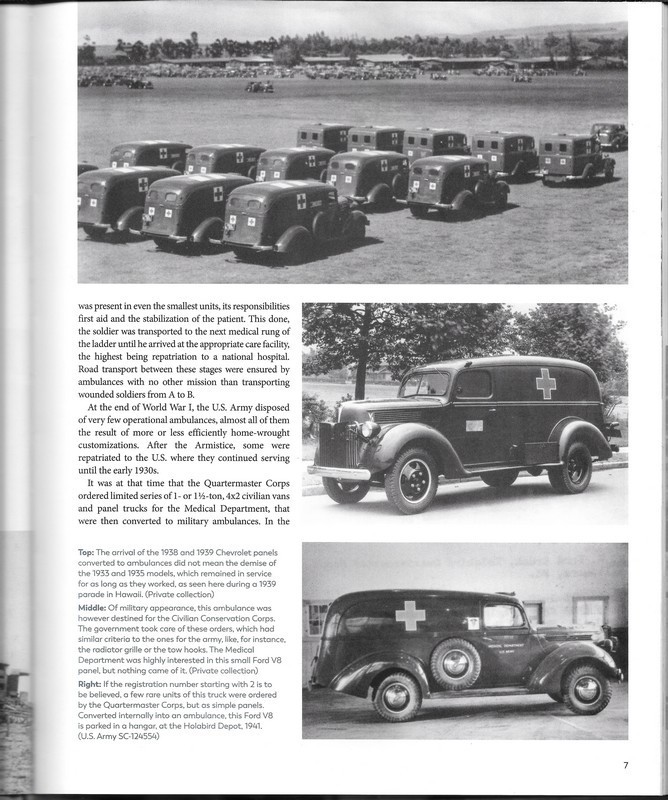
The operating room was a minature theater, powered by a generator and equiped with a water boiler, air conditiong and a filtration system
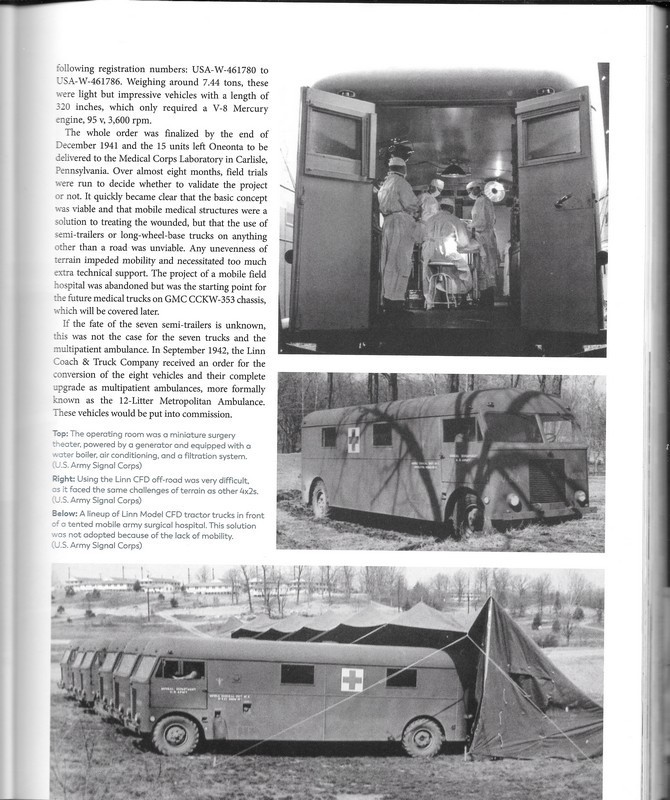
Bottom picture Normandy 11th June 1944. A DUKW is transfering patients to a better suited vehicle for sea transport
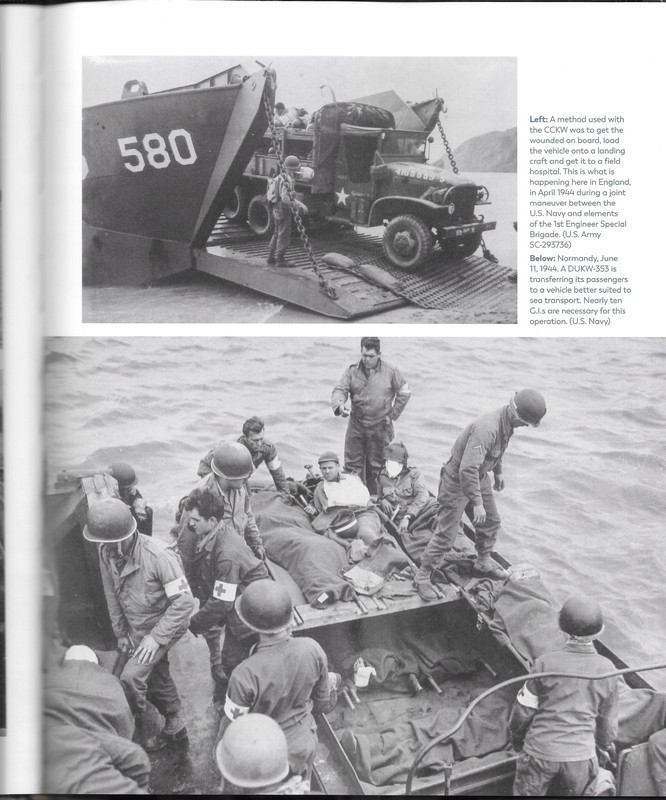
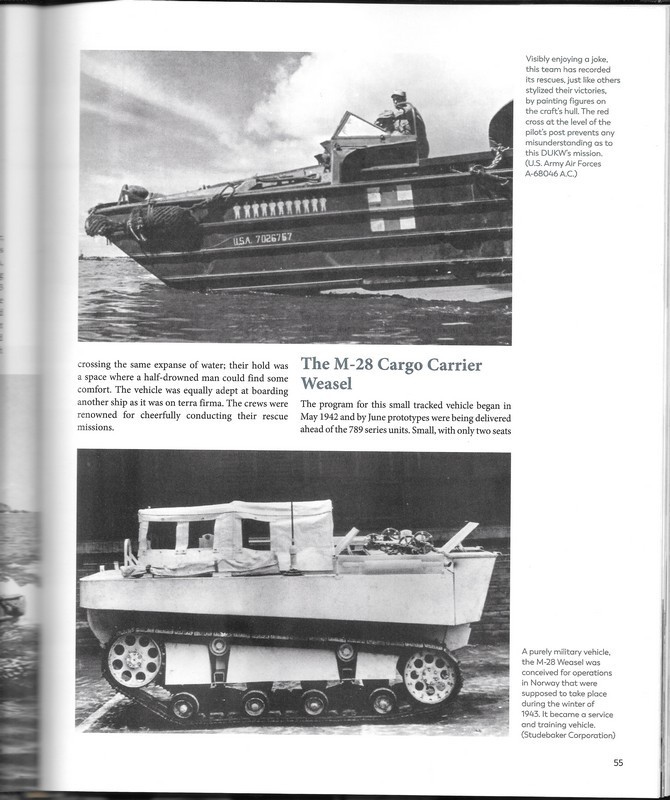
Part of the reverse lend lease, the AEC 10T10 Regal single decker London bues being converted into field hospitals and even a mobile dental clinic
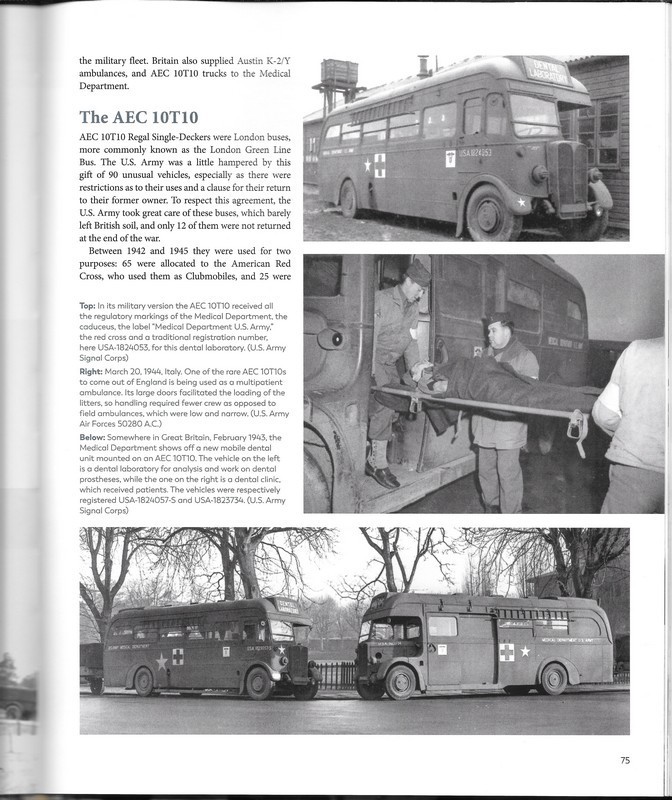
A dramatic picture showing and ambulance shot up showing you just some of the dangers faced by medics followed by some pictures showing the colouring emblems and markings of a British ambulance

